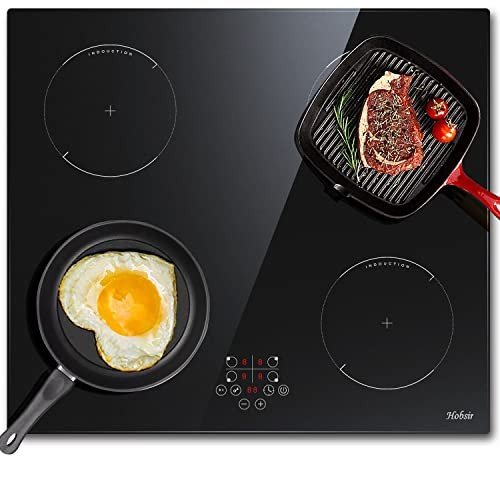The Ugly Reality About Oven And Hob

The Complete Guide to Ovens and Hobs: Choosing the Right Appliances for Your Kitchen
When it concerns creating cooking work of arts, the importance of quality kitchen appliances can not be overstated. Ovens and hobs are the heart of any kitchen, making it possible for home cooks and professional chefs alike to produce, bake, and sauté tasty meals. Understanding the different types of ovens and hobs, along with their functions and performances, is essential for making informed getting choices. This post uses an extensive look at ovens and hobs, helping you navigate the options readily available so that you can improve your kitchen's effectiveness and flexibility.
Understanding Ovens
Ovens are important for cooking and baking and been available in numerous types to fulfill varied culinary needs. Here is a summary of the most common kinds of ovens:
1. Standard Ovens
Standard ovens work by heating up the air inside with gas or electric components. They are ideal for baking cakes, roasting meats, and cooking casseroles.
2. Convection Ovens
These ovens utilize a fan to distribute hot air, offering an even temperature throughout, which can substantially reduce cooking times. They are perfect for baking cookies or roasting veggies.
3. Microwave Ovens
Microwaves prepare food quickly utilizing electro-magnetic radiation. They are perfect for reheating leftovers or defrosting frozen foods however are not appropriate for browning or crisping.
4. Wall Ovens
Incorporating a wall oven into your kitchen style can conserve space and produce a streamlined visual. They work similar to conventional or convection ovens but are built into the wall for simple access.
5. Variety Ovens
These ovens combine stovetop burners with an oven, offering adaptability for those who prefer a single home appliance for all cooking requirements.
| Type | Cooking Method | Best For |
|---|---|---|
| Standard | Electric/Gas | Baking, roasting |
| Convection | Air circulation | Quick cooking, even baking |
| Microwave | Electro-magnetic | Reheating, thawing |
| Wall Ovens | Electric/Gas | Space-saving, streamlined design |
| Variety Ovens | Electric/Gas | Versatile cooking |
Exploring Hobs
Hobs, also called cooktops or stovetops, offer the surface area to prepare pans straight over a heat source. Like ovens, hobs come in various types, which can be categorized as follows:
1. Gas Hobs
These hobs utilize a flame for cooking and supply instant heat control. They are favored by lots of chefs for their responsiveness and accuracy.
2. Electric Hobs
Electric hobs utilize coils or flat surfaces to heat pans. They provide a constant heat source, but they might take longer to cool off compared to gas hobs.
3. Induction Hobs
Induction hobs utilize electro-magnetic energy to heat pots and pans directly, making them extremely efficient and quicker to cook. They are likewise much easier to clean as the surface area stays reasonably cool.
4. Strong Plate Hobs
These are older technology that uses solid metal plates to offer heat. Fan Oven Sales are long lasting however are less effective than contemporary options.
| Type | Heat Source | Benefits | Downsides |
|---|---|---|---|
| Gas Hobs | Flame | Instant heat control | Needs gas connection |
| Electric Hobs | Electric coils | Constant heat | Slower to cool off |
| Induction Hobs | Electromagnetic | Fast cooking, energy-efficient | Requires compatible cookware |
| Strong Plate Hobs | Strong metal plate | Sturdiness | Less effective |
Choosing the Right Appliances
Choosing the best oven and hob for your kitchen includes considering different elements:
1. Space and Layout
Procedure your kitchen location to figure out the size and placement of the oven and hob. Make sure there is adequate ventilation, specifically for gas home appliances.
2. Cooking Style
Consider how frequently you prepare and the kind of meals you prepare. A stove may match avid bakers, while somebody who frequently stir-fries might choose an induction hob.
3. Energy Source
Choose the energy source that best fits your way of life. Gas offers immediate control, while electric and induction hobs provide ease of use and are often more energy-efficient.
4. Spending plan
Determine your budget plan for kitchen home appliances. Ovens and hobs differ considerably in price, depending upon features and brands. Focus on important functions that satisfy your requirements.
5. Features
Look for performances such as self-cleaning options, smart innovation compatibility, particular rack setups for ovens, and security features for hobs.
Regularly Asked Questions (FAQs)
Q1: What is the difference in between a conventional oven and a convection oven?A1: Conventional ovens warm the air within without fans, while stove utilize a fan to distribute hot air for more even cooking. Q2: Can I utilize aluminum pots and pans on induction hobs?A2: No, induction hobs require ferrous (magnetic )materials like cast iron or stainless steel to work effectively. Q3: Do gas hobs heat faster than electric hobs?A3: Yes, gas hobs provide instant heat, making them faster for cooking compared to electric hobs. Q4: Is it safe to utilize a microwave oven?A4: Yes, when used according to the maker's instructions, microwave are considered safe for cooking.
Q5: How often should I clean my oven and hob? Fan Oven Sales : For optimum performance, tidy your oven frequently, specifically after spills. Hobs should be cleaned down after each use
to avoid buildup. Ovens and hobs
are vital components of a well-equipped kitchen. Comprehending the numerous types, their functionalities, and the factors to consider associated with acquiring
them can considerably improve cooking experiences. Whether one is a casual home cook or a professional chef, investing time in selecting the right home appliances can result in cooking success and fulfillment in the kitchen. By focusing on functions that line up with your cooking style, energy sources that fit your home, and budget considerations, you can develop an efficient work space that motivates cooking creativity.

